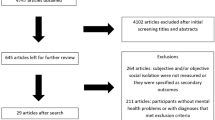Abstract
Discharge planning endeavours to assist the transition of patients from the acute hospital setting into the community. We examined the quality of discharge planning from the perspective of the carer. Spouses were the most common carers for the elderly patients in our study. Many carers were also elderly, with their own health problems. Using a new instrument (entitled PREPARED) (K. Grimmer and J. Moss, Int J Qual Health Care (in press)), carers rated the quality of planning for discharge much lower than did the patient, indicating that their needs were often not met when discharge was being planned. In free text responses, carers expressed their dissatisfaction over communication about how the family would cope once the patient went home. Carers generally had lower summary mental quality of life scores than the Australian norms (as measured by the SF-36 health survey (J. Ware and R. Sherbourne, Med Care 1992; 30: 473–483)), suggesting that the caring role may have impacted upon their emotional wellbeing. The rate of use of community services in the first week post-discharge was low, suggesting that carers and patients carried the majority of the burden immediately after discharge. We suggest that planning for hospital discharge requires more consideration of the carer.
Similar content being viewed by others
References
Mooney G, Scotton R (eds). Economics and Australian Health Policy. NSW: Allen and Unwin, 1998.
Clare J, Hofmeyer A. Discharge planning and continuity of care for aged people: Indicators of satisfaction and implications for practice. Aust J Adv Nurs 1998; 16: 7–13.
Farren E. Effects of early discharge planning on length of hospital stay. Nursing Ec 1991; 9: 25–30.
Armitage S, Kavanagh K. Hospital nurses' perceptions of discharge planning for medical patients. Aust J Adv Nurs 1996b; 14: 16–23.
Jackson M. Discharge planning: Issues and challenges for gerontological nursing. A critique of the literature. J Adv Nurs 1994; 19: 492–502.
Balla J, Jamieson W. Improving the continuity of care between general practitioners and public hospitals. Med J Aust 1994; 161: 656–659.
Blaylock A, Cason C. Discharge planning: Predicting patients' needs. J Gerontol Nurs 1992; 18: 5–10.
Hedges G, Grimmer K, Moss J, Falco J. Performance indicators for discharge planning: A focused review of the literature. Aust J Adv Nurs 1999; 16: 20–28.
Chao J. Continuity of care: Incorporating patient perceptions. Fam Med 1988; 29: 333–337.
Wiles R, Pain H, Buckland S, McLellan L. Providing appropriate information to patients and carers following a stroke. J Adv Nurs 1998; 28: 794–801.
Fakhoury WK, McCarthy M. Can the experience of caring at home affect carers' retrospective evaluation of community care services? Scand J Caring Sci 1998; 12: 179–185.
Rosenvinge H, Jones D, Judge E, Martin A. Demented and chronic depressed patients attending a day hospital: Stress experienced by carers. Int J Geriatr Psychiatr 1998; 13: 8–11.
Cooper MH. Resource allocation in the health services sector. In: Banta D (ed) Resources for Health. New York: Praeger, 1982; 3–16.
McLeod R. The role of economic analysis. In: Empty Bed Blues: Australian Health Care Policy. Australian Institute for Public Policy, Policy Paper No. 9, 1987; 11–13.
Wijeratne C. Review: Pathways to morbidity in carers of dementia sufferers. Int Psychogeriatr 1997; 9: 69–79.
Jewell S. Discovery of the discharge process: A study of patient discharge from a care unit for elderly people. J Adv Nurs 1993; 18: 1288–1296.
Grimmer K, Hedges G, Moss J. Staff perceptions of dis-charge planning: A challenge for quality improvement. Aust Health Rev 1999; 22: 95–109.
Grimmer K, Gill T, Moss J. Cost Efficient Discharge Planning: Satisfaction for All. Adelaide; Department of Human Services ISBN 0 86803 628 5, 1999.
Grimmer K, Moss J. A new instrument to assess the quality of discharge planning activities from the consumer per-spective. Int J Quality Health Care (in press).
Ware J, Sherbourne R. The MOS 36-item short-form health survey (SF36): I. Conceptual framework and item selection. Med Care 1992; 30: 473–483.
Australian Bureau of Statistics. National Health Survey. SF-36 Population Norms. Australia: ABS Catalogue No. 4399.0. 1995.
Swan J. Consumer satisfaction related to disconfirmation of expectations and product performance. J Consumer Satisfaction, Dissatisfaction and Complaining Behavior 1988; 1:40–47.
Boulding W, Kalra A, Staelin R, Zeithaml V. A dynamic process model of service quality: From expectations to behavioural intensions. J Marketing Res 1993; 12: 7–27.
Nelson C. Patient satisfaction surveys: An opportunity for total quality improvement. Hospital Health Services Administration 1990; 35: 409–417.
Armitage S, Kavanagh K. The discharge liaison nurse at the interface of hospital and community nursing services. Int J Nurs Prac 1996a; 2: 215–221.
Armitage S, Kavanagh K. Continuity of care: Discharge planning and community nurses. Contemp Nurse 1995; 4: 146–155.
Author information
Authors and Affiliations
Rights and permissions
About this article
Cite this article
Grimmer, K.A., Moss, J.R. & Gill, T.K. Discharge Planning Quality from the Carer Perspective. Qual Life Res 9, 1005–1013 (2000). https://doi.org/10.1023/A:1016693825758
Issue Date:
DOI: https://doi.org/10.1023/A:1016693825758




